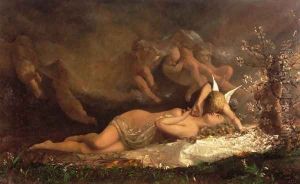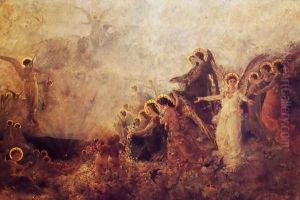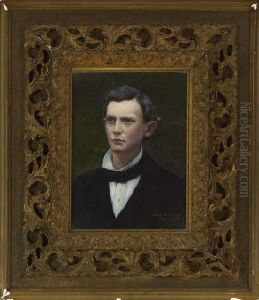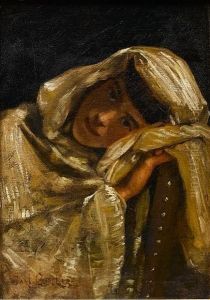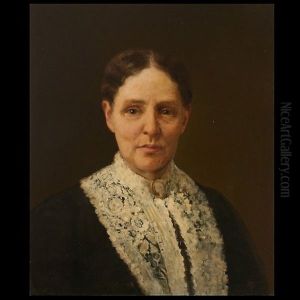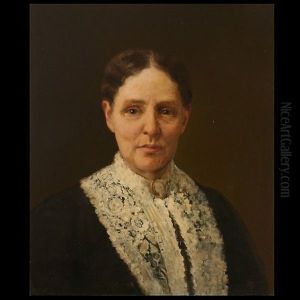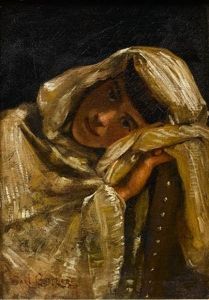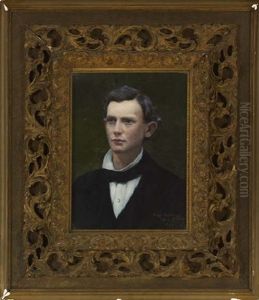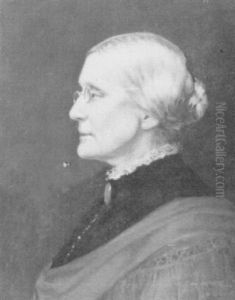Carl Gutherz Paintings
Carl Gutherz, born on February 6, 1844, in Schoeftland, Switzerland, was a multifaceted artist whose work spans painting, mural creation, and influential roles within the American art community, particularly during the late 19th and early 20th centuries. His family moved to the United States in 1851, initially settling in Saint Louis, Missouri. Gutherz's artistic journey began under the guidance of Paul Harney in Saint Louis and later in Europe, where he further honed his skills. His education included studies at the École des Beaux-Arts in Paris and under the mentorship of renowned artists such as Alexandre Cabanel and Jean-Léon Gérôme, immersing him deeply in the academic artistic traditions of the time.
Throughout his career, Gutherz's work demonstrated a keen interest in Symbolism and the Aesthetic Movement, distinguishing him from his contemporaries with his unique blend of mysticism, nature, and human emotion. His artistic output included a wide range of subjects, from landscapes and portraits to more allegorical and mythological themes. Notably, his work was recognized and exhibited in prestigious venues, including the Paris Salon, highlighting his acceptance and success within the international art community.
In the latter part of his life, Gutherz played a significant role in the development of the art scene in Memphis, Tennessee. He served as the director of the Memphis Academy of Arts (now the Memphis College of Art) and was instrumental in fostering a vibrant artistic community in the region. His influence extended beyond his teaching, as he was actively involved in local art organizations and initiatives that sought to promote the arts within Memphis and the broader Southern United States.
Carl Gutherz's legacy is one of artistic innovation and dedication to the cultivation of the arts. His contributions to American art history are marked by his efforts to bridge European artistic traditions with the burgeoning art scenes of the American South. His death on January 7, 1907, marked the end of a prolific career, but his influence continued to be felt through the generations of artists he inspired and the institutions he helped to build and shape.

